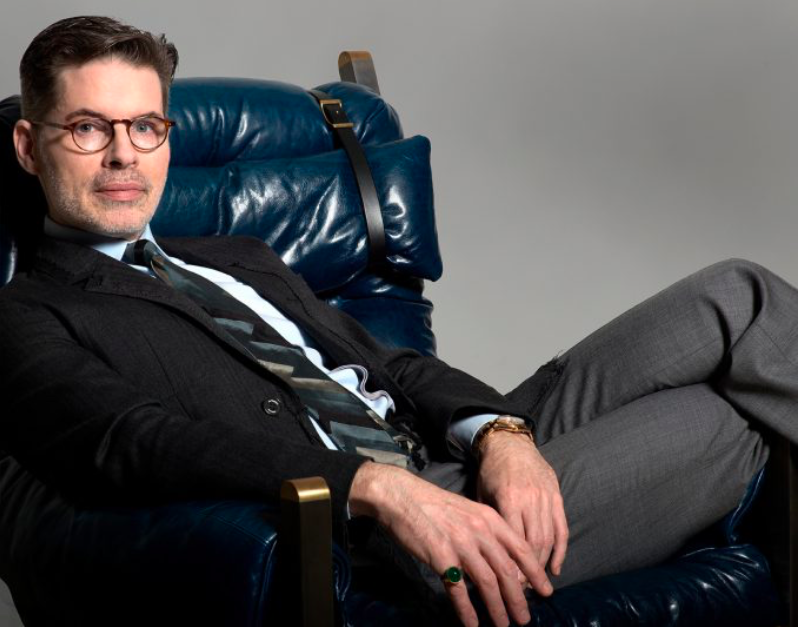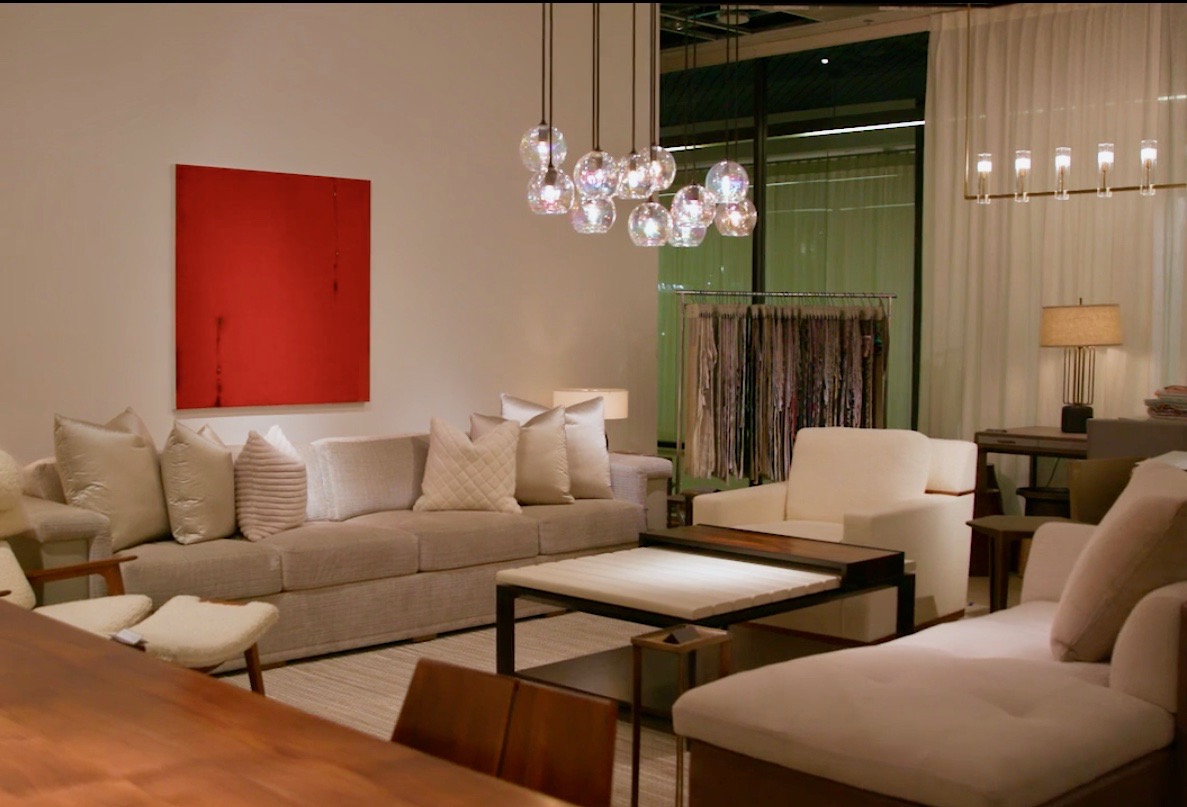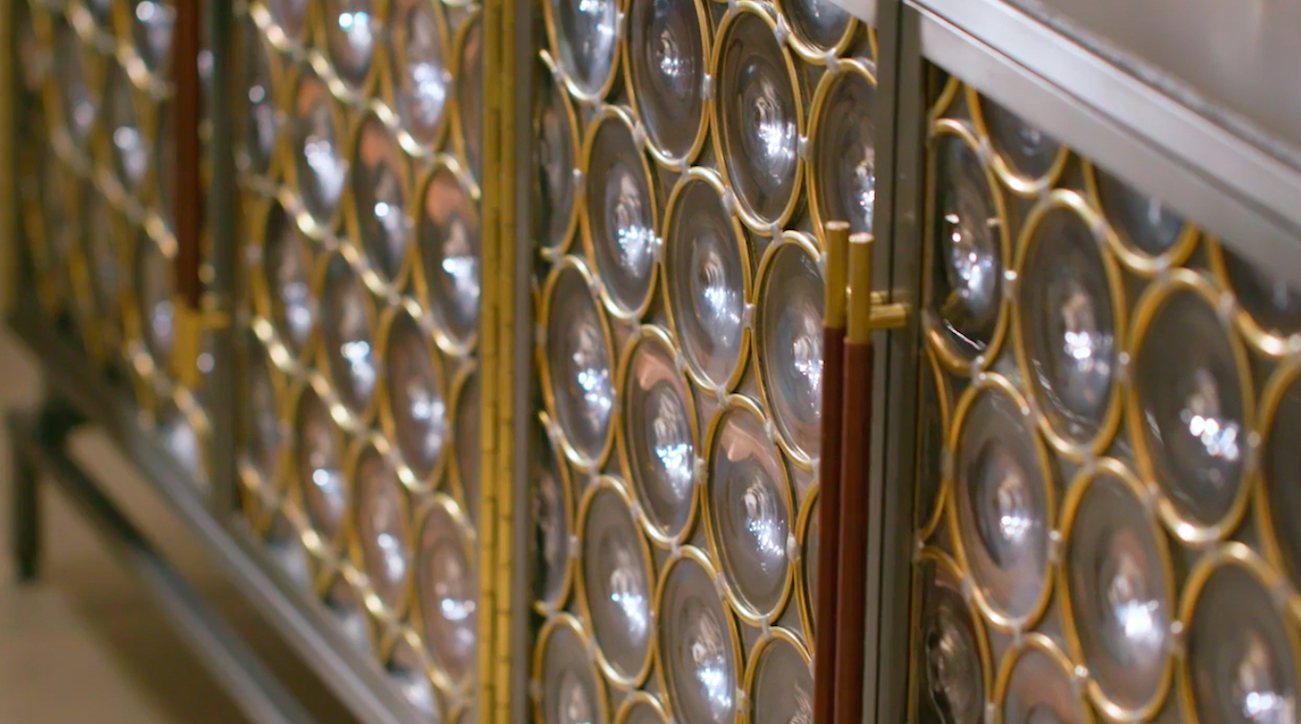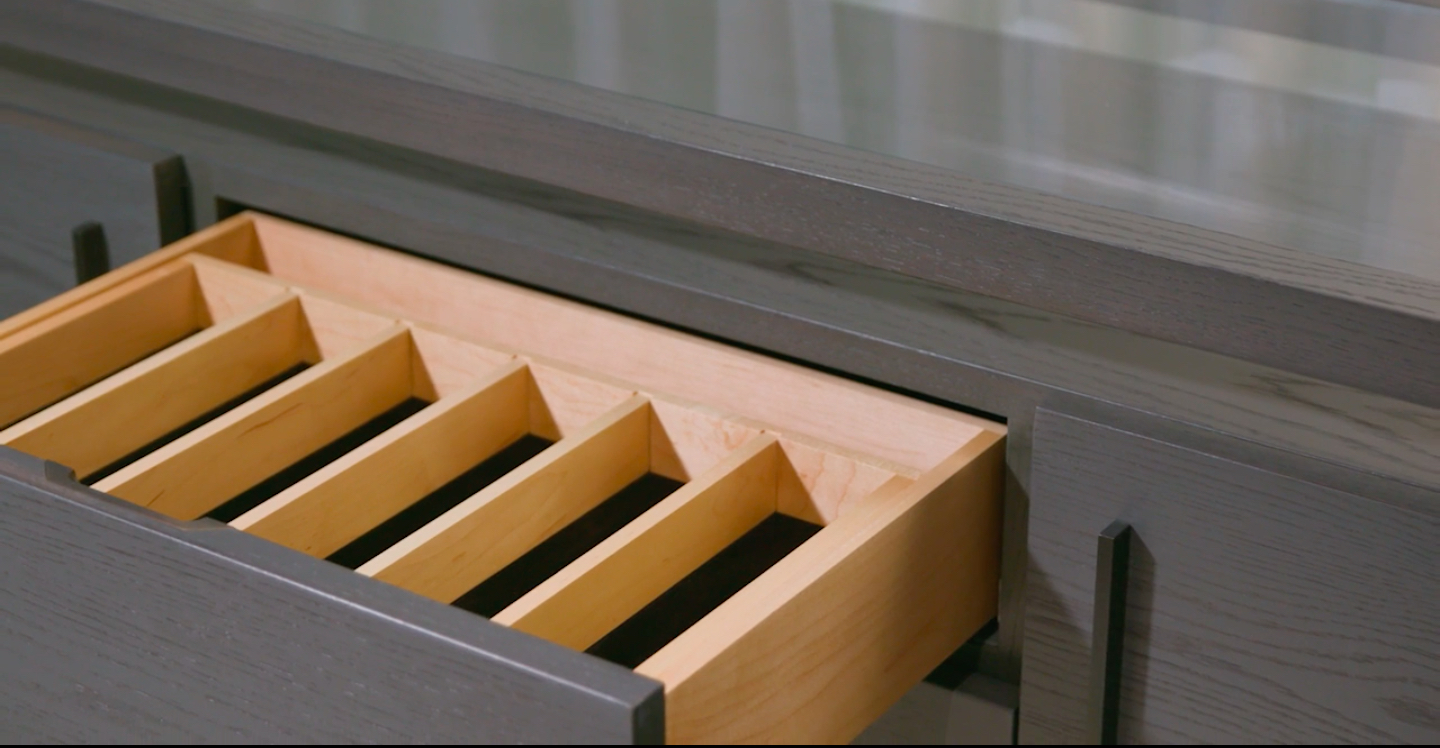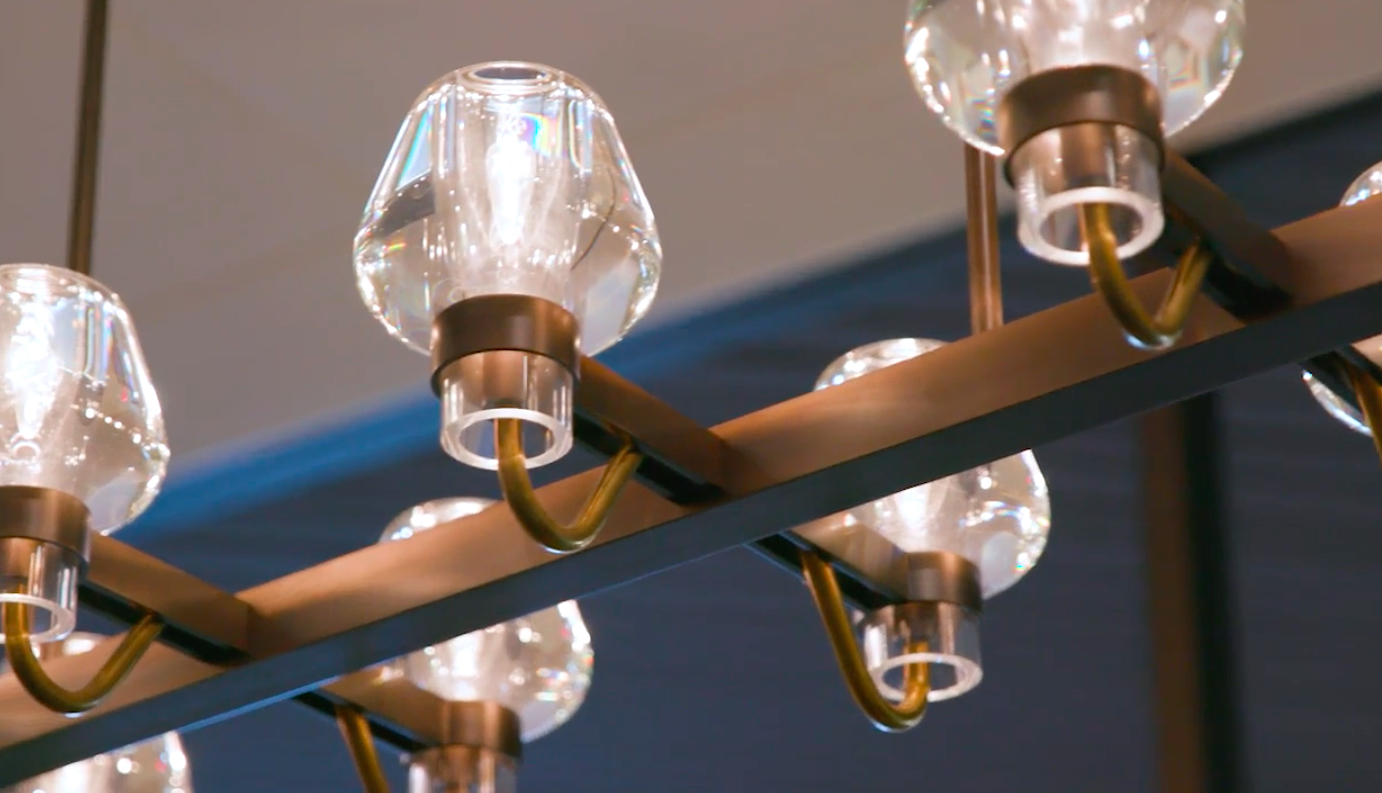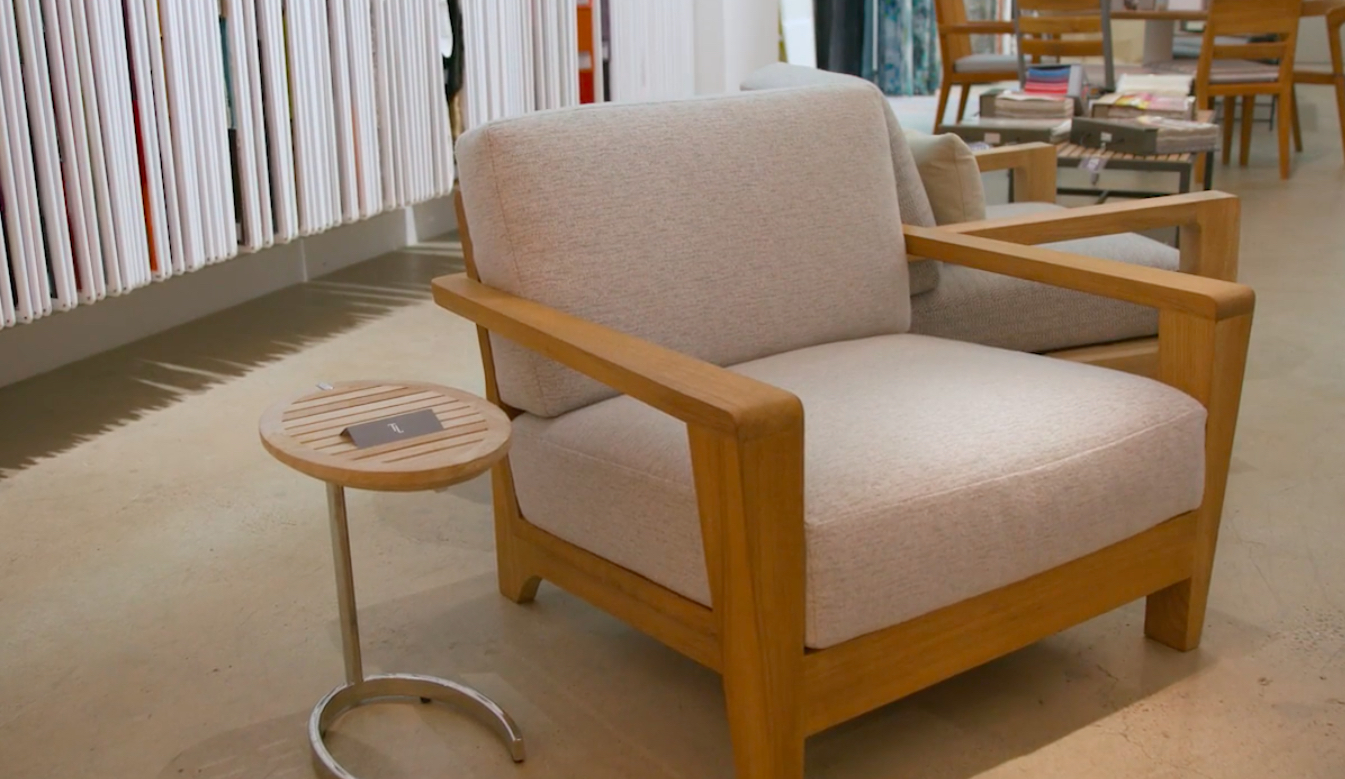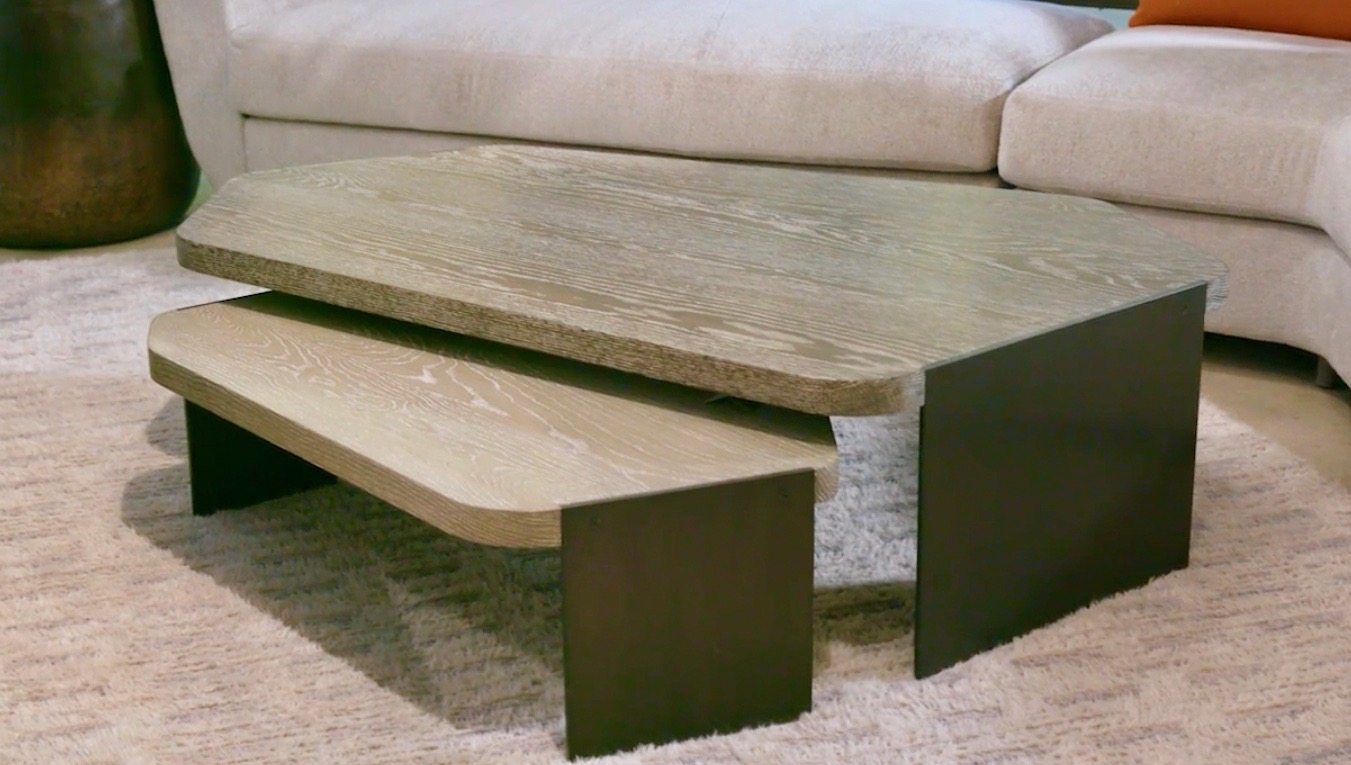For interior-design extraordinaire Thomas Lavin, it’s personalized service that sets his showroom apart. Since opening a 3,500-square-foot showroom on Beverly Boulevard in 2000, Thomas Lavin has consistently grown over the years and now has two locations: a 17,000-square-foot showroom in the Pacific Design Center in Los Angeles and a 12,000-square-foot showroom in the Laguna Design Center. Collaborating with designers, and building and maintaining those relationships, has also been a major key to Lavin’s success; he now represents more than 50 brand collections across both locations. Here, Lavin shares with us his story on how he first became interested in design, fascinating collaborations, and the role of technology in the marketplace today. There’s also his love of Paris—a city that took hold of Lavin after many visits to Maison et Objet.
When did you first decide you wanted to pursue design as a career?
I decided to pursue design as a career when I was working for a publicist back in 1994, and he was shouting at me, and he said, “The only thing you could ever do is work in design.” I thought, “That’s perfect. I’m going to do that.” And this was back in the day where you would look in the want ads for a job. I applied and got my first job. That was working for Everage Design. They are still my friends today, and still clients, and it’s been a wonderful ride for, gosh, 25 years now.
How did your grandfather inspire your love of design?
When I was a kid and I would go visit my grandparents at their house, I even knew, at age four, that it was something special. He had brought in artists from Japan to hand paint on silver leaf tea paper in their entryway, and I walked in and I just had this sort of internal experience that this is elegant, this is refined, and I didn’t even know what those words meant was when I was four.
As we got a little older, he would talk about his experience working on the Disneyland theme parks. He would talk about how they created the ghosts for the rides. He was always impeccably dressed and had a great sense of humor. I think it was a global experience in all realms.
How would you describe the Thomas Lavin showroom?
I think today, I would describe it as expanding, best in class and fun. Service is really the byword for my team and me. It’s a place where you can find exquisitely produced furniture, lighting and textiles from the United States and beyond. At Thomas Lavin, we have a few different things we’ve always talked about that are pillars of our philosophy and our values. One, it’s really a family business. It didn’t start out that way, but, ultimately, my mother and my sister, and some cousins, work here and then there are people who work in my LA showroom who are related to people in my Orange County showroom. We’re a family business, and, if you’re not part of the family, you get adopted. I think service is critical. I work the floor myself. I help customers. I stand up. I handle problems. We want to make sure that every designer has the best experience they can from the moment they place their order until they receive the product.
We’ve always said, since I opened, that we’re an extension of designers’ offices. We started a campaign this year where we’re using the original Alice in Wonderland illustrations, and we have images of Alice growing, and she’s tall or she’s short. In the tall one, it says, “Do you feel stretched?” And we so often do. Or there might be another image and she’s shrunk under the table and it says, “Do you feel small?” All of that communicates in a cute way that we’re here to help designers however we can: to shop their schemes, send out packages and visit them in their offices.
How important to you is it to collaborate with designers?
When I decided to open my own showroom in 2000, I really wanted to do it because I love the feeling of taking care of someone. I like that experience of collaboration, and, at that moment, there were some friends who had lines that were either coming to fruition or just not in Los Angeles yet. So Jiun Ho is someone who I’ve represented since I opened. I remember sitting at lunch and we had a conversation about how we could come together and create this thing. Gary Hutton and Kevin Kolanowski of Fuse are other people that I’ve represented since we opened.
Over time we’ve added some collections that might be more established, but always driven with an artisanal point of view. I have stories about every single brand that I represent. And I believe that one of the things that separates our industry from, let’s say retail for example, are the stories that support all of the collections that we represent.
One of the great stories is Hellman Chang. Eric Chang and Daniel Hellman were childhood friends. They used to play in their father’s wood shop and make all different sorts of toys and furniture and ephemera. They went off to pursue their own careers. Eric Chang went on to be a very successful advertising executive. Daniel Hellman went on to be a classical guitarist. And at some point, Eric realized that despite his success, pursuing design perhaps would bring him more internal satisfaction. He called Daniel and they said, “Yeah, let’s do it.” So they started working on the weekends in a collaborative woodworking place in Brooklyn. Over time, they built up and they now have two factories of their own.
Another great story is about when Jiun Ho and I started. Jun came to me as a recommendation from a secret source. He was just about to sign with another showroom, and this person heard that I was opening, so Jiun and I had a clandestine lunch. He brought his stack of drawings. He’d created a bespoke penthouse for a woman in Taiwan. I was able to launch his furniture collection with that. I was opening; he was starting; so we decided to go for it. Since we started, Jiun Ho’s gone on to create some of the most wonderful collections. They are based on his trips from around the world. He’s expanded into lighting and textiles, and he’s grown, and so have we.
I have such a great story around Christian Liaigre. When I was working at Kneedler Fauchère, it was a moment of growth, and they were bringing in Holly Hunt, who’d discovered Christian Liaigre. So I was the first salesperson in southern California to sell the line. I opened; Holly went on to do her own thing, and, at some point, Christian Liaigre came back on the marketplace. I was having lunch with a big time consultant and I said, “I wish I knew who was representing him because I want the line.” He told me, and I wrote to her on Facebook. I said, “I really want to work with you guys.” She said, “Absolutely.” I flew to New York and did a presentation. We have proudly represented Liaigre for about eight years now and we’re undergoing a remodel of their space across the way with wooden floors, wooden walls and an updated lighting package.
How have these collaborations helped your brand over the years?
We have been very systematic about our expansion. When we started in 2000, we were 3,500 square feet. In 2001 we went to 5,000 square feet. We moved to the Pacific Design Center in 2005 and we took about 10,000 square feet. In 2014 we added Liaigre with their free standing boutique, which is the only non-corporate boutique in North America, which took us to a total of 13,000 square feet. And with our addition and our remodel, we’ll be at 17,000 square feet.
We represent an upholstery company out of New York, Bright Chair. Bright Chair is a third-generation company, and we’ve known about them for a while. The owner, Stan Gottlieb, came to me one day. You know when you meet those people and it’s an instant connection? The second we saw Stan, we didn’t even know everything about BrightChair; we just said we want to work with this man. And so we’ve been with them for about four years just growing together and loving each other.
The brands that we represent at Thomas Lavin are in alignment with our value statement and our philosophy. They are about bringing beauty to the world in a passionate way, providing best service and best quality. Some of our brands have subsidiaries, so for example Romo has about five brands. Zimmerota has four brands. Jap has about four brands. So when you add up all the collections with the subsidiaries, I would say we have about 50 collections. And they range from very small artisanal to things that are more substantial with many layers to them.
Who or what inspires you?
I’m really inspired all the time from walking around. I think in the design world, we’re looking at the world through the lens of how to view, so I can be inspired by the gardenias growing in my yard or by a painting. Travel is one of my passions, and I’m always inspired when I’m traveling. I don’t think that I’ve ever taken a trip where I wasn’t inspired, so I’ll mention some of my favorites. Istanbul is wild. You can feel the intersection of the East and the West. You can feel the thousands of years; you can see the ancient and the modern. In Cambodia, the people are extraordinary and the food is delicious, similarly to Thailand. And you can see the modern world encroaching upon this ancient world so quickly. Of course, London and Paris. Cooking also inspires me. I made vegetable paella yesterday, and it made me happy. So I try to find the joy in life wherever I am.
What are some of the trends you’re currently seeing in design?
One of the current trends in design that I find fascinating right now is the significant, quick rise of wall covering. I think we’re seeing a return to color. There are some places in the showroom where I know our manufacturers are going to start pushing for prints on their upholstered furniture. I don’t think I’ve seen that since the 1980s. I think we’re seeing a little bit more glam; we’re seeing more lacquer, exotic woods and high polish. For example, Liaigre is a line that I would usually think of as satin, and not about the high gloss. But when Liaigre finds a wood that they think is beautiful, such as Jamaican dogwood or some kind of exotic lace woods, they’ll do it in a high gloss.
What excites you about Style Row and what it’s bringing to the design world?
I think that there are a lot of companies that want to play in to the trade space. I think that so many people have tried to come up with ideas of what that looks like. And I feel like Style Row and its founders have come up with a way that addresses all the components that are important to our industry: respecting the designer; respecting the trade show room; and all the challenges and joys that we’re up against, including territory, the talent, and really looking at the technology and how it can support growth, and allow the trade to expand in the United States and beyond.
So I think as we have all been looking at technology, and looking at how our businesses can grow and service contemporary society. What we know is that relationships in our industry are paramount. Without the relationships, there’s no possibility of doing any of the custom work or any of the kinds of transactions that are required for high-end luxury design. At the same time, we know that our designers are working faster and their clients are savvier. It’s important to have a vehicle like Style Row so the designers have access to product 24/7, and, as needed, they can push forward and customize and help their projects be done in a speedy, timely manner.
What do you enjoy the most about attending Maison et Objet?
Every January we attend Maison et Objet and Deco Off, and, for us, it’s really become a wonderful experience for all of our designers in California. Particularly Deco Off, which is where all of our fabric companies launch their spring collections for the following year. We get together and we have events; we have showings; I started hosting a luncheon every year for our best and favorites. And then on the Friday evening, me and a bunch of showroom owners from around the country host the American party. In January 2019, it will be our 10th anniversary party at a to-be-determined surprise space.
What are some of your favorite places to visit in Paris while you’re there for Maison et Objet?
As many times as I have been to Paris, there’s always something new to discover. One of the places that people told me about for years was the Musée de la Chasse. Finally two years ago I went to the Musée de la Chasse, and it is a Hotel Particulier in the Third Arrondissement where these people collected really important contemporary art and taxidermy. So you’ll be walking through the house, and there’s a stuffed jaguar jumping over a bar. Last year I discovered the Musée Nissim Camondo, which was one of the most extraordinary museum experiences I’ve ever had. This merchant banker moved from Istanbul to Paris and ended up building one of the most extraordinary mansions on Parc Monceau, filled with the best Louis the 15th and 16th antiques he could find, such as Sèvres porcelain and Oberson carpets. He left it to the city, which was fortunate.
When I’m in Paris, I literally walk up and down every street in the Sixth Arrondissement and check out every shop. And I don’t even remember all the names. Of course there’s Muriel Grateau, and she’s making some of the best porcelain in the world. And so I always visit to see what Muriel’s up to. There’s a little Japanese shop right around the corner that brings extraordinary period lacquer and Komi boxes, so I think it’s always just looking and seeing what’s happening on all of those streets.
When I go to Paris, there are so many wonderful places to eat and they’re a few that we never miss. One of our favorites is Le Timbre in the Seventh Arrondissement. It’s so small that when you go in, you’ll get pushed against the windows. The food is always extraordinary and the value is fantastic. We always try and hit something fancy, and see what the great epic world chefs are up to. And then for shopping, I always pop in to Dries Men because they’ve just released the spring collection for the following year. And then of course Moncler, which has an extraordinary selection of clothing, furniture and accessories in six locations throughout Paris.
How would you describe your personal style and fashion?
That’s always such a great question. I think my friends say eclectic, because I never look the same. You know, one day it’s sort of black monk wear, and then the next day it might be something that’s a bit more vibrant. I get dressed for fun in the morning.

